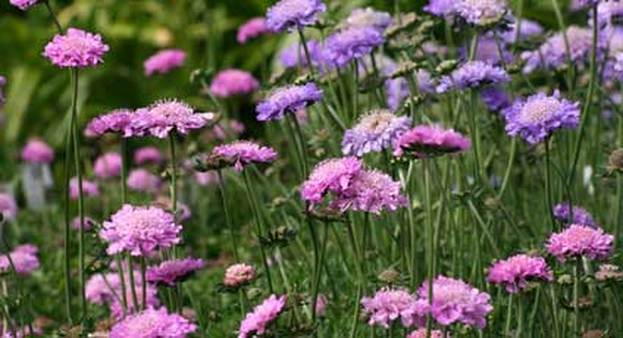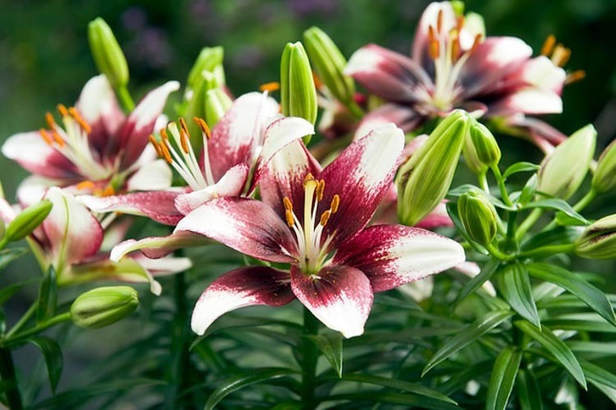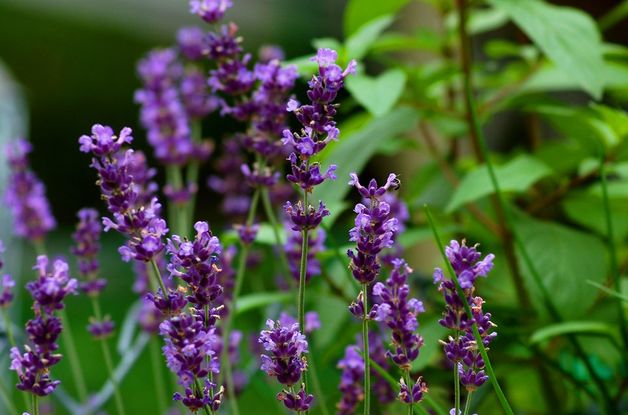|
5/16/2018 0 Comments A New Way to DesignDesigning a garden can be a mystery to most homeowners. Achieving a balance of continuous color and great foliage can take years of experimenting. We've made it easier with our new formula which can be used with perennials as well as trees and shrubs. We think it's such a great idea, we've set up our Perennial House with these categories for our sunny perennials. Here's the recipe for your success: 1 part Backbone plants 1 part Long Blooming plants 3 parts Plants for a Season: * 1 part Spring Blooming * 1 part Summer Blooming * 1 part Fall Blooming Choose plants from each of the above categories for a well-balanced, well-designed perennial bed. Then, for fun, add in a few Plants for a Reason - it's like the frosting on the cake. Step One: Backbone Plants Every well-designed garden begins with a good foundation, or in this case, a good backbone. In the perennial garden, backbone plants provide structure and interest through the entire season. This included peonies and hardy Hibiscus, which become shrub-like when not in bloom. The same is true of False Indigo (Baptisia), which can grow to be 3' tall and 3' wide. Plants with variegated foliage (Vanilla Gorilla Masterwort) , silver foliage (Silver Mound Artemisia), chartreuse foliage or other interesting foliage (Lady's Mantle) are also included in this category because they look great even when not in bloom. Tall perennials, such as Delphinium, Hollyhocks, and Penstemon are included in this group as well. Their tall stature gives the garden a back drop for other perennials. In the mixed border when shrubs are also included, evergreens are considered a backbone plant as are shrubs with interesting foliage like variegated dogwoods. Step Two: Long-Blooming Plants The workhorse of every well-designed garden are plants that have a long bloom time. It's unrealistic to expect a perennial to flower April through October, however, there are several perennial families that bloom for a good three months. This category includes Coreopsis, daisies, Hardy Geraniums, Catmints, and Salvias among others. By the way, the new April Night Salvia actually blooms in April - a whole month earlier than other Salvias - giving the spring garden deep purple color. Repeat bloomers like Purple d'Oro Daylilies are also included in this category of long-blooming perennials. Note that some of these plants need to be deadheaded or sheared back to encourage more blooms. Step Three: Plants for a Season This is an important step when trying to achieve a perennial garden in which something is always blooming. Spring, Summer, and Fall each have their stars, so a well-designed garden will include a few of each. Spring (April - May): creeping Phlox, Iris, and Anemone Summer (June - August): Alliums, daylillies, Asiatic lilies, Phlox, Black-eyed Susans, Russian Sage, and yarrow Fall (Sept - October): Asters, hardy mums, and ornamental grasses Choosing at least one from each of these seasonal categories, combined with long-blooming perennials from step two, will ensure a continuous color show. Step Four: Plants for a Reason
This final category of sunny perennials are plants with a purpose, fill a need, or are just for fun. They could become theme gardens as well. A few that we are including this spring are: * Plants for Pollinators * Drought-tolerant Plants * Native and Nativar Plants * Deer Resistant Plants * Groundcovers * Climbers * A Collector's Corner with hard to find plants We think this is a fail-proof way to design a garden. Remember, we've set up our perennial house with these categories of sunny perennials to make it even easier for you. By including plants from each category and planting in threes and fives, your garden will provide interesting flowers, foliage through the entire growing season, and a well-designed look. Tracy Hankwitz Horticulturist and General Manager of Burlington Garden Center
0 Comments
Leave a Reply. |
|
|
STORE INFO
5205 Mormon Road Burlington, WI 53105 262.763.2153 |




